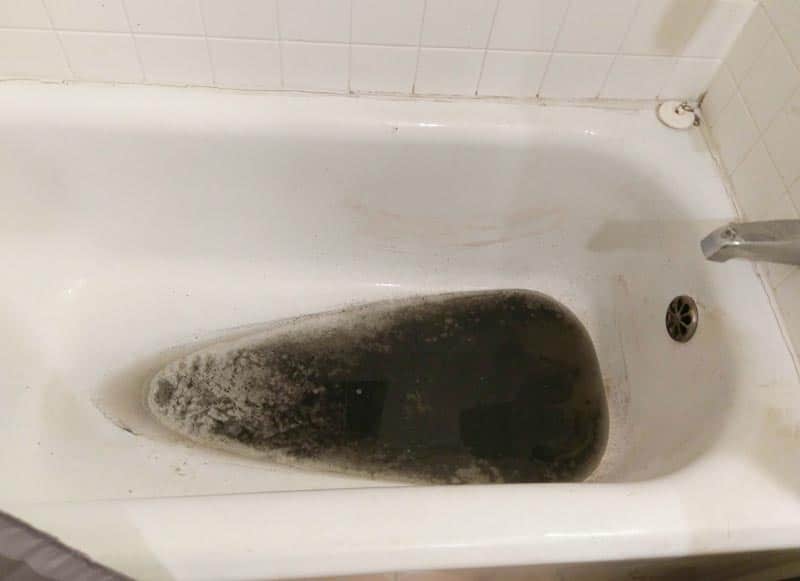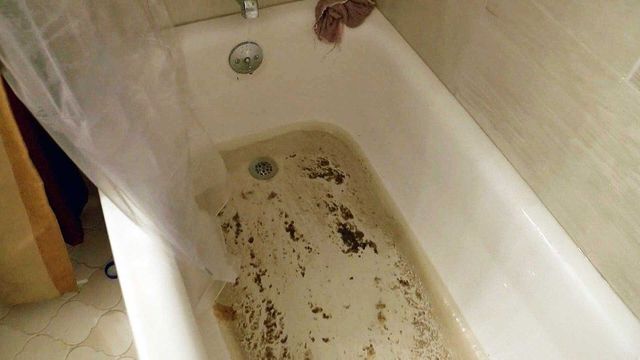Scrutinizing the Phenomenon of Effluent Rising Through the Bathtub
Scrutinizing the Phenomenon of Effluent Rising Through the Bathtub
Blog Article
We've unearthed this great article about What To Do If Sewage Starts Backing Up Into the Shower down the page on the net and decided it made sense to quickly share it with you over here.

Sewage back-up in the tub can be an upsetting and unsanitary issue for any type of property owner. Not only is it inconvenient, however it likewise positions significant health threats and indicates underlying issues with the plumbing system. Comprehending why sewage is showing up via the bathtub is important for taking ideal activity to attend to the issue successfully.
Intro to the Concern
Typical Reasons for Sewage Back-up
Clogs in the Sewage System Line
One of the most common root causes of sewage backup is a blockage in the drain line. This can occur as a result of the buildup of particles, oil, or international objects in the pipes, stopping proper flow and causing sewage to support right into your tub.
Tree Root Breach
Tree origins seeking moisture and nutrients can infiltrate drain lines through small splits or joints. Gradually, these roots can expand and expand, creating substantial damages to the pipelines and leading to sewage backup concerns.
Comprehending the Trouble
When sewage starts backing up into the tub, it's a clear indication of a trouble with the drainage system. The wastewater that ought to be moving far from your home is instead finding its back right into your home, which can result in substantial damages and health hazards.
Prospective Reasons
Numerous variables can add to sewage back-up in the bath tub. From obstructions in the sewer line to concerns with the plumbing facilities, recognizing the source is necessary for discovering a service.
Aging Facilities
Older homes might have dated plumbing systems that are more at risk to corrosion, fractures, and degeneration. As pipelines age, they become a lot more susceptible to leakages and blockages, boosting the probability of sewer backup incidents.
Heavy Rainfall or Flooding
Throughout durations of heavy rainfall or flooding, the drain system may come to be overloaded with excess water, causing backups and overflows. This can result in sewer supporting into tubs and various other fixtures inside the home.
Indications of Sewage Back-up
Foul Odors
Unpleasant odors originating from drains or components, especially in the bathroom, might suggest sewage back-up concerns. These smells are usually strong and relentless, indicating a trouble that needs instant focus.
Slow Draining Fixtures
Bathtubs, sinks, and bathrooms that drain slowly or otherwise at all could be experiencing sewage backup. If numerous fixtures are impacted concurrently, it's likely that the concern stems from a typical point, such as the main sewage system line.
Gurgling Noises
Odd gurgling or gurgling sounds coming from drains when water is running in other places in your home are a measure of air trapped in the plumbing system. This air accumulation can result from sewage backup and ought to be explored immediately.
Health And Wellness Dangers Associated with Sewage Back-up
Contamination of Water System
Sewage backup can infect the water system in your house, posturing a major wellness threat to you and your family members. Exposure to infected water can bring about gastrointestinal issues, skin infections, and various other diseases.
Mold Growth
Wetness from sewer back-up can create perfect conditions for mold and mildew growth in your home. Mold and mildew spores can exacerbate breathing issues and cause allergic reactions in delicate individuals, making timely clean-up crucial.
Spread of Illness
Sewer has harmful microorganisms, viruses, and parasites that can create a series of illness, including liver disease, cholera, and gastroenteritis. Entering contact with sewage or contaminated surfaces places you in jeopardy of infection.
Cleaning Up After Sewer Back-up
Sanitation Procedures
Completely disinfect and sanitize affected locations after sewer back-up to remove hazardous germs and avoid mold development. Usage proper cleansing products and safety equipment to ensure risk-free and efficient clean-up.
Repair of Affected Locations
Fix any damage to floor covering, wall surfaces, or components brought on by sewage back-up. Depending upon the level of the damages, you might need to change carpeting, drywall, or other products to restore your home to its pre-loss problem.
Immediate Actions to Take
Switching Off Water
In the event of sewer backup, it's vital to switch off the water to prevent further contamination and damages. Locate the primary water shutoff valve in your house and closed it off until the problem can be solved.
Getting In Touch With a Professional Plumber
Handling sewer back-up is not a do it yourself work. Get in touch with a licensed plumber with experience in dealing with sewage-related problems to evaluate the circumstance and do needed repairs or cleanings.
Avoiding Contact with Polluted Water
Up until the sewer backup is solved, prevent contact with infected water to avoid the spread of bacteria and microorganisms. Wear safety equipment if you need to remain in the damaged location and clean your hands extensively afterward.
Safety nets
Routine Maintenance of Sewage System Lines
Arrange normal assessments and upkeep of your drain lines to identify and deal with possible concerns before they escalate right into major troubles. This can consist of clearing out particles, checking for tree origin breach, and repairing any kind of damaged pipes.
Setting Up Backwater Shutoffs
Think about mounting backwater shutoffs in your plumbing system to avoid sewer from receding right into your home during periods of heavy rainfall or flooding. These shutoffs immediately close when water draws back up, protecting your residential property from contamination.
Proper Disposal of Home Waste
Prevent flushing anything aside from toilet tissue and human waste down the commode to stop clogs and clogs in the sewer line. Dispose of oil, oil, and other house chemicals correctly to minimize the danger of plumbing issues.
Why Is Water Backing Up in My Bathtub When I Flush My Toilet?
What to do about a sewer line clog
First, don’t bother with plunging. No amount of plunging will dislodge the clog in a sewer line. The clog is too far away. Plungers are for clogs in the toilet itself, not the sewer line. Plus, the most likely causes of a sewer clog are:
Tree roots Flushed toys or feminine products Grease buildup Those items don’t move easily. And in the case of tree roots, the roots need to be cut out of the pipe and the pipe will need to be repaired.
You’ll need a closet auger. A closet auger is a type of plumber’s snake with a protective cover to keep from scratching the delicate porcelain toilet. If the clog is further down, you may need to remove the toilet or use one of your cleanouts to get to the clog.
We also recommend doing a video inspection of the drain to ensure that the cause of the clog has been completely removed. Otherwise, you could have the same problem again in a few days or weeks.
https://mspplumbingheatingair.com/blog/why-is-water-backing-up-in-my-bathtub-when-i-flush-my-toilet

I was made aware of that editorial about Why is Sewage Backing Up Into My Bathtub? from a pal on another site. For those who appreciated our blog posting kindly make sure you remember to share it. Thanks for taking the time to read it.
Pricing
Report this page